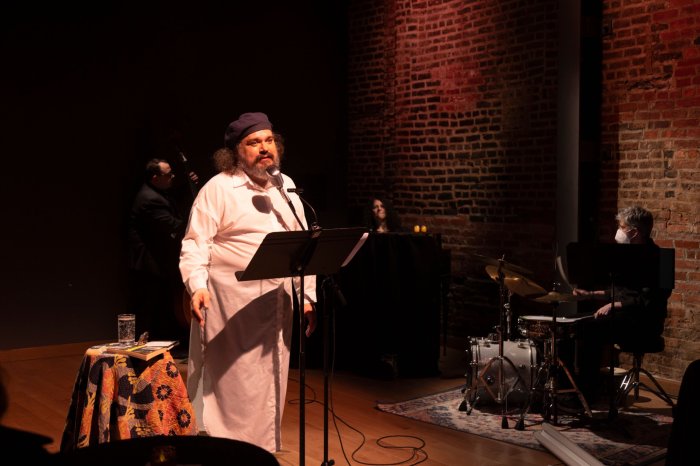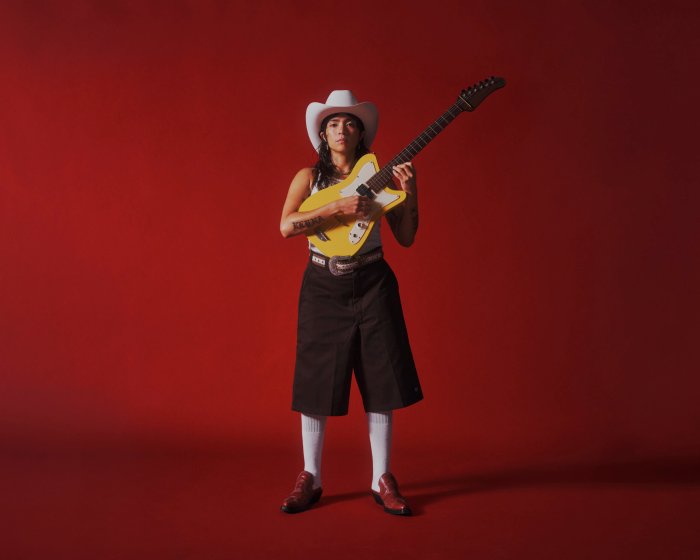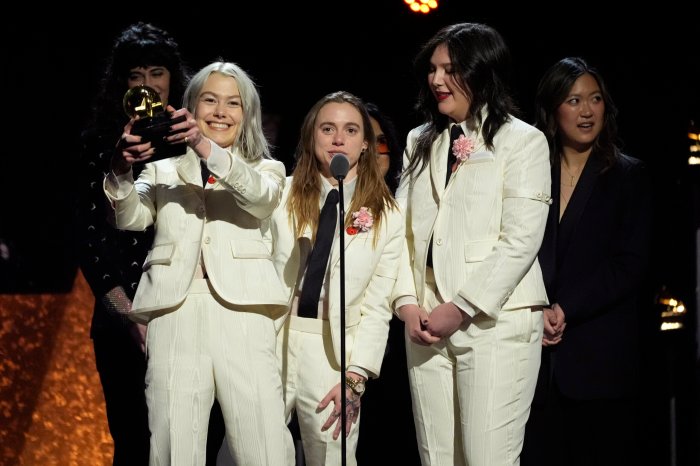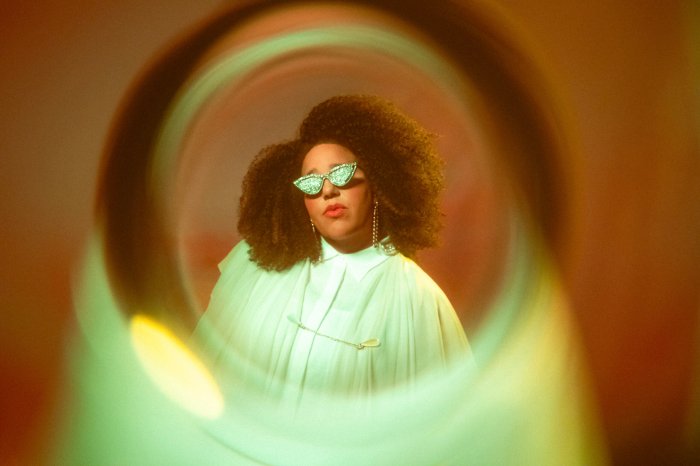Splendid Evenings in Dallas and Chicago
BY DAVID SHENGOLD | For an opera fan, it’s salutary to get away from “old accustomed places” and experience the art form in unfamiliar theaters.
A first-time visit to Dallas Opera February 25 left me envious of the audiences that regularly attend the gorgeous, Norman Foster-designed Winspear Opera House, opened in 2009. Its architecture, public spaces, sightlines, and appointments are almost universally tasteful and pleasing — the glaring exception being the bright letters above the pit proclaiming THE SHANNON AND TED SKOKOS STAGE. Fortunately, they switched off seconds before Graeme Jenkins launched the “Tristan und Isolde” prelude.
That sublime, harmonically disturbing passage emerged rather earthbound, but Jenkins’ command of the score grew more impressive thereafter, with Act Two particularly vivid and articulate. The acoustic flatters the orchestra; some horn bobbles — almost inevitable in non-festival Wagner — didn’t much detract from the evening’s totality.
Originally, Dallas Opera intended a concert staging, but donors came forward to fund a video projection-based production with shifting panels and scrims by Christian Raeth that succeeded spectacularly — with striking nautical imagery in the outer acts and a well-imagined amatory bower among trees for Act Two’s Liebesnacht that shifted modalities with the characters’ emotions. Raeth blocked and motivated the action beautifully. If only he and his videographers — plus costumer Susan Cox and Alan Burrett (lighting) — could come replace the “Machine” that cripples Robert Lepage’s barely inflected “Ring” at the Met — and would serve better, like those discarded IRT cars, as an undersea reef off Staten Island.
In the 18 years since City Opera’s “Prince Igor,” out-and-proud Cajun soprano Jeanne-Michele Charbonnet has slimmed down and become an intense, expert actress, commanding the art of phrasing Wagner even when her assertive voice turns harsh on high. Hers may not be a sound for home listening, but — as with Waltraud Meier’s blazing Met Isoldes — the trade-off in the theater proved worth it. Over the evening, she managed to vary color and dynamics.
Clifton Forbis didn’t match her in facial or bodily mobility or declamatory imagination, but his restrained Tristan communicated nobility and feeling. Forbis provides not a distinctive timbre but forthright, utterly secure singing, with welcome ring on top notes.
Brangaene brought forth much refulgent, handsome tone from occasional Met mezzo Mary Phillips, enchanting to see and, like Charbonnet, utterly convincing in every gesture and expression. Huge in scale and emotionally specific, Kristinn Sigmundsson made King Marke’s often boring monologue riveting — certainly the greatest performance I’ve heard from this craggy Icelandic bass. Like most Kurwenals, Finnish baritone Jukka Rasilainen merited the adjective “bluff,” but delivered a fine third act. Tenor Aaron Blake capably doubled the lyrical duties of the Sailor and the Shepherd.
Lyric Opera of Chicago’s March 9 “Show Boat” found Francesca Zambello working in her “Fourth of July Pageant” mode, with skittering moppets and waved flags — not a bad choice given the huge auditorium, but some of the undertones that made Jerome Kern and Oscar Hammerstein’s 1927 show so groundbreaking and seminal got slighted. Still, the separate white and black choruses and (wonderful) dance squads, united only at curtain calls, made their mark, and having a sad procession of blighted African-American lives — including Julie — cross the stage behind the splendidly resonant Morris Robinson’s reprise of “Old Man River” acknowledged the realities of Jim Crow America.
On a more hopeful note, Zambello moved the telling cameo of the Lady on the Levee across the color bar; part of the complicated legacy of “Show Boat,” intentional and unintentional, concerns the ways in which the world of popular culture helped erode — if sometimes by sheer appropriation of black modes by white entertainers — racial barriers.
John de Main conducted with authority. My major complaint concerned the uneven and sometimes distorting sound design, contradicting LOC’s current ad campaign slogan “Our Singers Don’t Need Microphones.” The nominal leads sure did. Nathan Gunn gave a charming, small-scaled Ravenal, the voice narrowing on top just where Kern demands expansiveness. Ashley Brown brought contemporary Broadway technique — fluent but insubstantial — and some anachronistic readings (a sitcom-style “Yes!”) to Magnolia, whom she and Zambello failed to notice must be pushing 60, in the final scene. Alyson Cambridge’s Julie, weak in dialogue, sang “Can’t Help Lovin’ dat Man” beautifully but failed to register the nuanced progression of heartbreak in “Bill.”
Robinson’s compelling Joe and Angela Renée Simpson’s wonderfully sung and expertly inflected Queenie dominated the evening. Cindy Gold (Parthy) and Bernie Yvon (Frank) proved excellent, and Ross Lehman (Captain Andy) and Ericka Mac (Ellie) — if more one-note — also pleased the crowd.
The next night, Iestyn Davies joined Harry Bicket and as soloist in an all-Handel concert by the local Baroque Band in Evanston’s Music Institute. The British duo had been cleaning up as Eustazio and conductor in LOC’s campily-directed but musically rewarding “Rinaldo,” involving terrific work from David Daniels, Luca Pisaroni, Elza van den Heever, and Julia Kleiter.
The concert proved a wonderful platform for Davies, all of 32, to display his still maturing instrument and fully mature artistry as a Handelian. Certainly, he’s among the forefront of countertenors in his generation.
The program contained six arias in English from oratorios (and “Semele”), the Italian cantata “Splenda l’alba” and Arsace’s three arias from “Partenope,” in which Davies excelled at City Opera. The 14-member Baroque Band added some orchestral pieces, playing with spirit — though some of the violins were better tuned than others.
Davies, a thorough and intelligent musician, shaped phrases beautifully and with maximum attention to structure and apt ornamentation. Words were intelligently imparted, but this is one area in which he could achieve even greater expressivity. The bucolic “The peasant tastes the sweets of life” from the rare “Joseph and His Brothers” and the exultant “Despair no more shall wound me” (“Semele”) proved particular highlights, but everything Davies and Bicket offered gave pleasure, including an encore from “Rodelinda,” the singer’s Met successful debut vehicle this past fall, Unulfo’s “Un zeffiro spiro.” The audience was duly delirious.
David Shengold (shengold@yahoo.com) writes about opera for many venues.

































